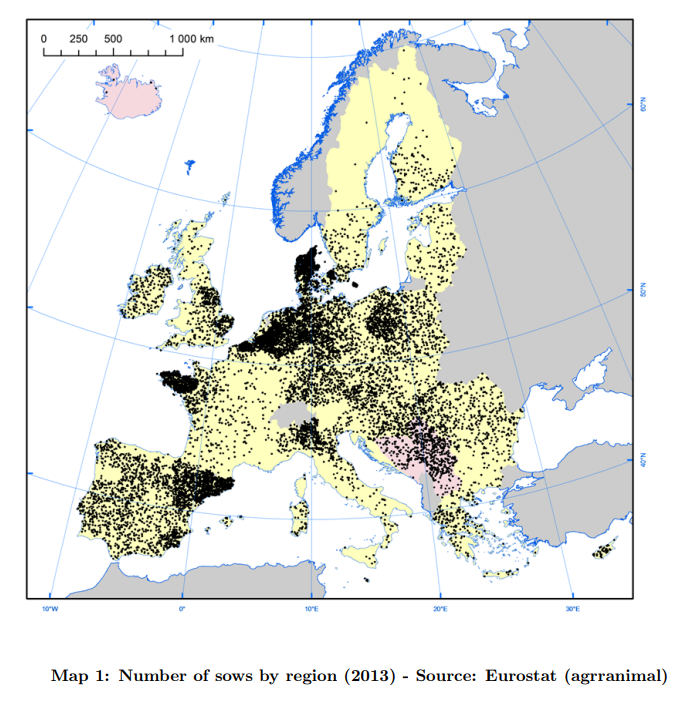



Market reaction: Who stands to gain from ASF in Germany?
A complete list of countries who have banned German pork along with the economic impact for EuropeAccording to Bethan Wilkins, dairy analyst at AHDB, the following countries have placed a ban on German pork imports:
- China
- Singapore
- Argentina
- Brazil
- Mexico
- South Korea
- Japan
- South Africa
Most of these countries were included in the “high risk” destinations identified in our previous analysis. Argentina, Brazil and Mexico were not included, but Germany has previously only sent negligible volumes to these destinations.
German pork was also already banned from the Philippines because of ASF fears in mid-2019.
Price reaction
Pig prices in Germany fell sharply in response to the outbreak of ASF. AMI quoted the VEZG Association price as €1.27/kg for the week ended 23 September, the same as last week but 14% down on the €1.47/kg quoted for the week ended 2 September.
The loss of most export markets outside of the EU presents significant challenges with carcase balance, particularly for offal products. Staffing levels also remain a difficulty in German processing plants.
Reports indicate that prices in Belgium, Denmark and the Netherlands have also experienced some downward pressure, though not to the same extent as in Germany. Low priced pork from Germany is undercutting other suppliers within Europe, though the extent to which processors will be willing to buy this pork remains to be seen.
On the other hand, processors with access to China now face the prospect of reduced competition on this market, which may prove price supportive. As a large exporter, Spain particularly stands to benefit, though freezing capacity may limit the volumes that can be traded.
National developments
The original wild boar carcase was found in Brandenburg state, which is in the eastern part Germany, surrounding Berlin. Five more infected wild boar have also been found close to the original location this week.
Bradenburg is not the most pig-dense part of Germany, containing about 2% of the overall national herd in 2016 (150,000 head) and about 4% of the breeding herd (45,000 head), according to Eurostat figures.

AMI report that slaughter in eastern Germany totals about 7 million head annually, whereas overall German pig slaughter is in excess of 55 million head. Reportedly, 1.2 million pigs were slaughtered in Bradenburg last year, with Vion operating a large plant in Perleberg. This plant is still about 300km from the location of the infected wild boar carcases though. The only other large plant in Eastern Germany is a Tonnies plant in Weißenfels, which is also nearly 300km away. This plant reportedly slaughters 4.6 million pigs annually.
Interim protective measures are currently in place in the area surrounding the boar carcases, before the formal regionalisation is confirmed. However, as the EU does take a regional approach to ASF-related trade restrictions, and so far, it seems there are relatively few farms near to the outbreak, the number of farms directly affected by restrictions may be low too. Of course, this depends on if, and where, other cases are found. Nonetheless, at present it looks like pig supplies will remain similar, though trade in this pig meat will largely be limited to within the EU.








